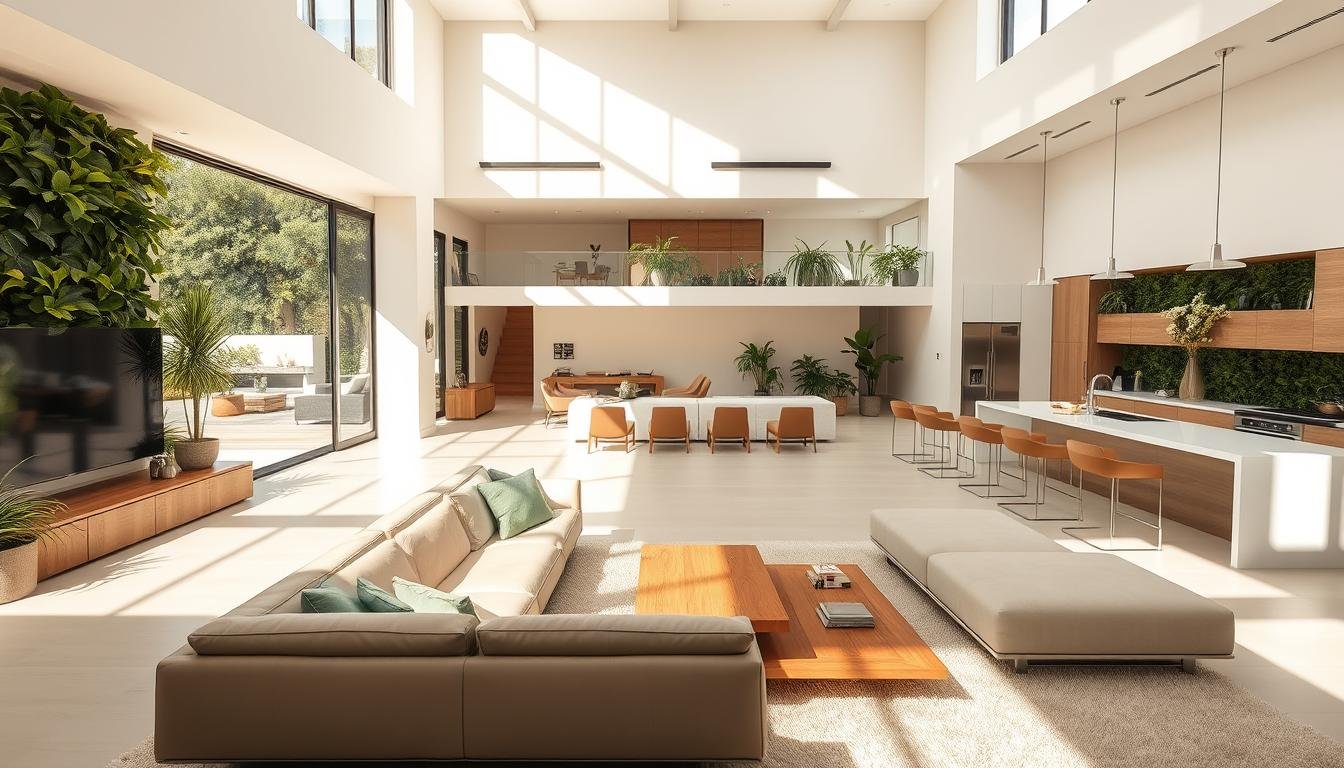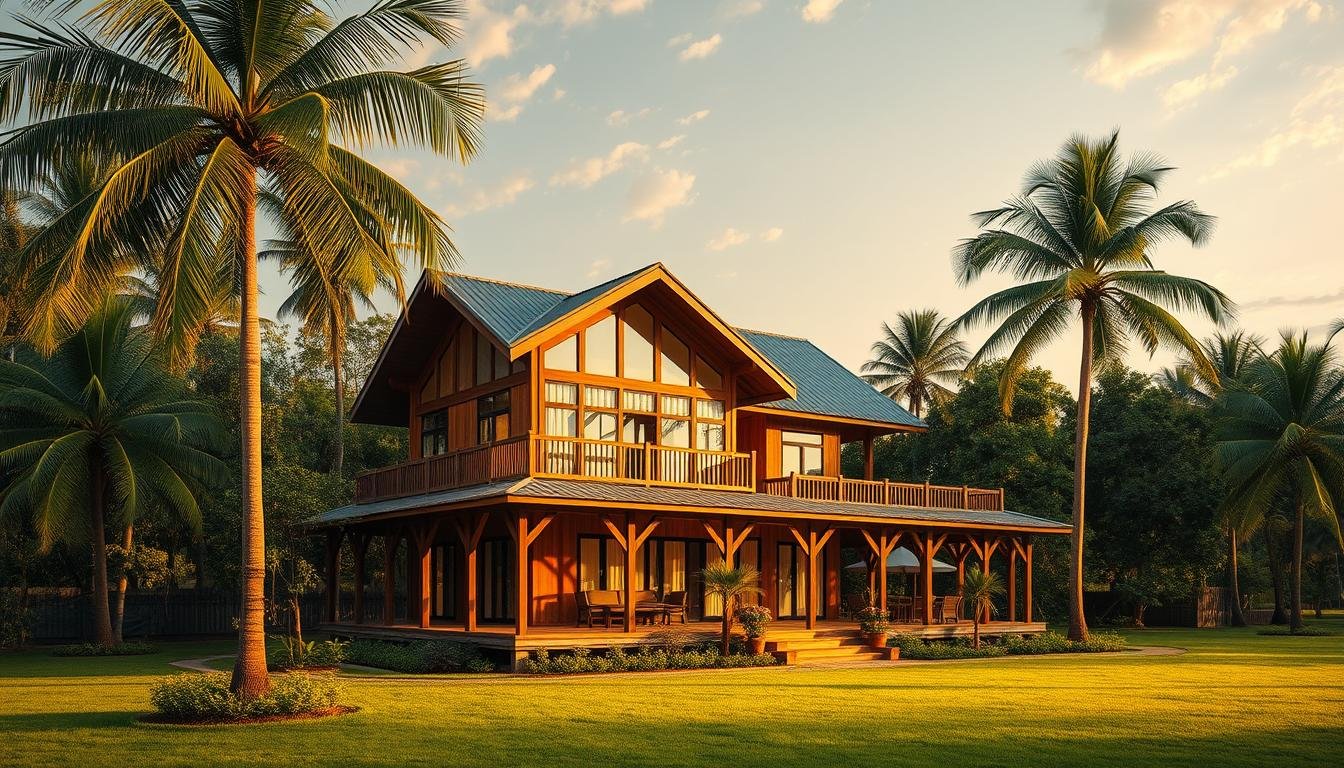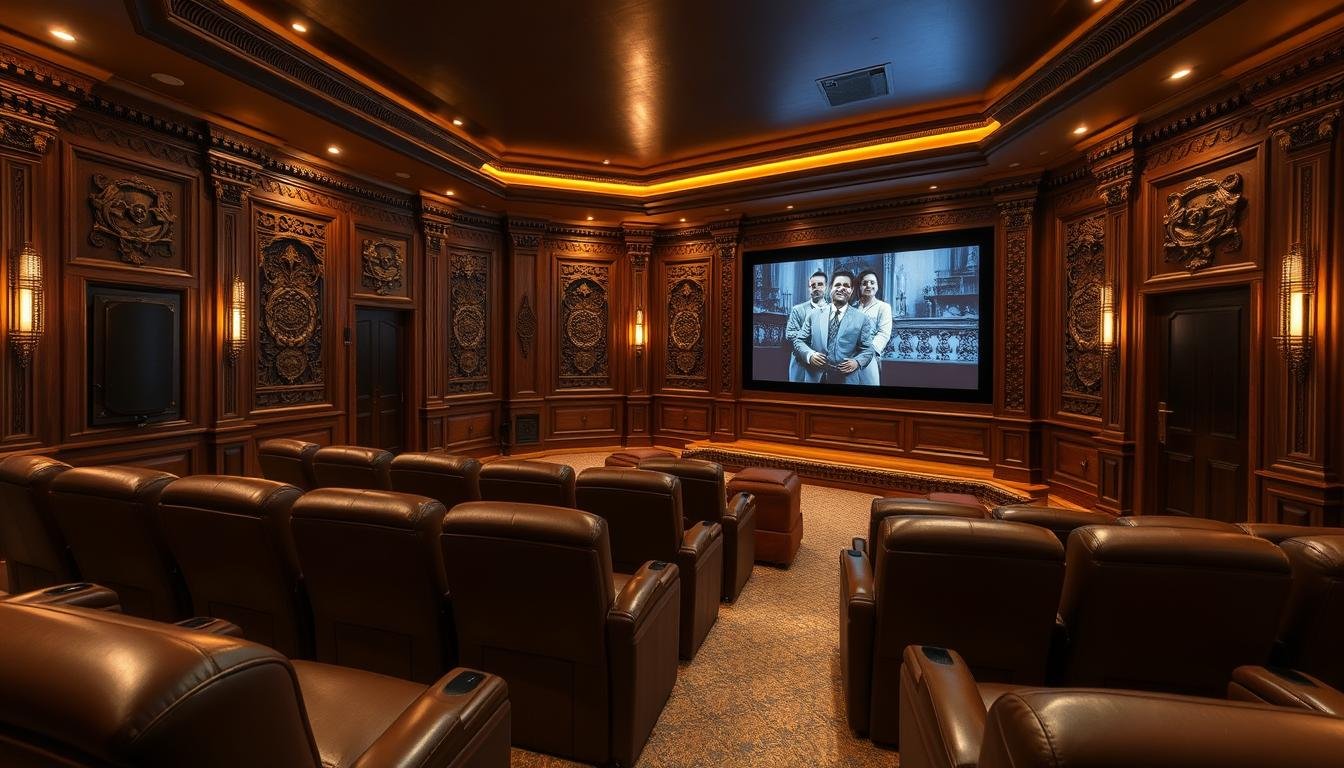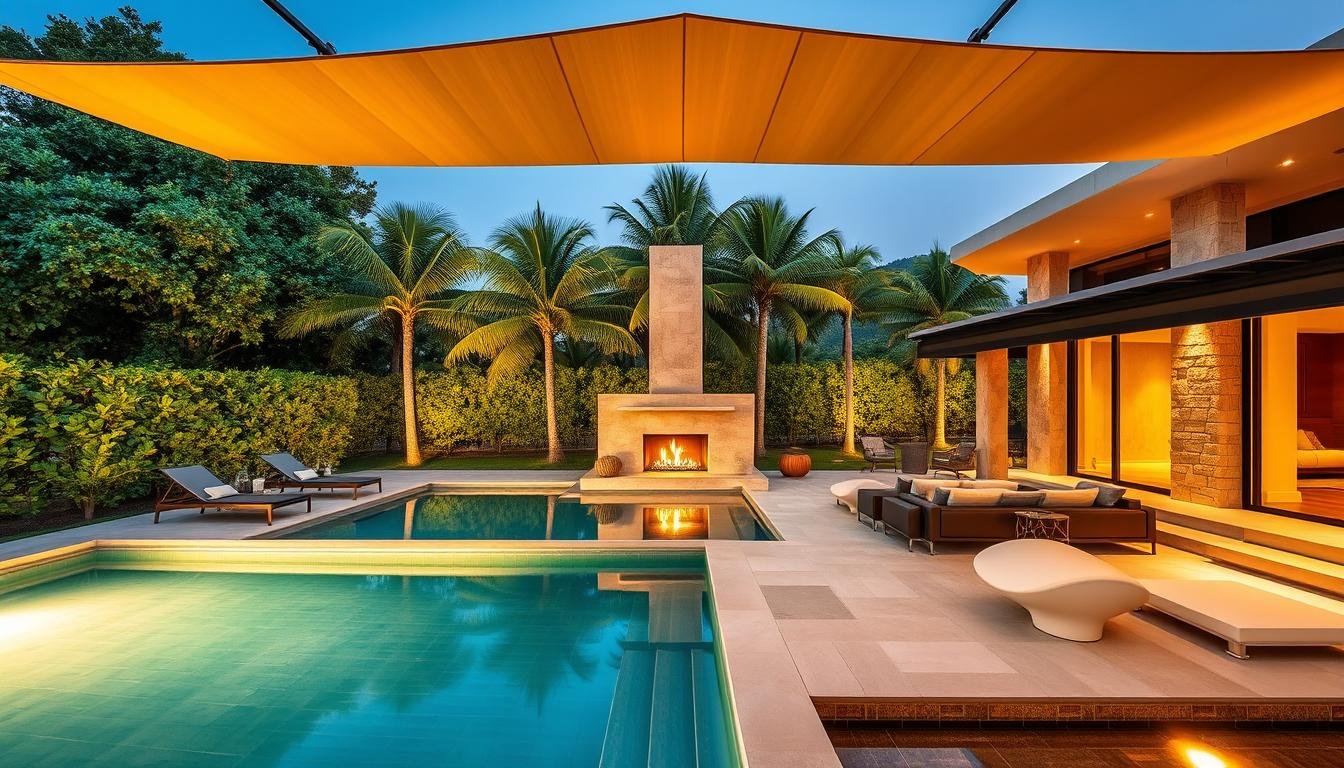Can a small corner hold the same calm and grace as a full altar in a large house?
We set the scene for a listicle that explores pooja room design traditional modern trends for Indian homes today. We show how classic motifs meet contemporary room design without losing sanctity.
In 2025, choices like laser-cut jaali panels, brass accents, marble backdrops, and warm integrated lighting shape the look. Teak, sheesham and engineered wood give lasting beauty, while floating shelves and concealed drawers keep the altar tidy.
We will outline practical ideas for doors, storage, wall treatments, and lighting that suit apartments and larger homes. Our approach respects Vastu guidance—northeast is ideal, with east or north acceptable—while offering flexible execution for compact spaces.
Expect actionable tips that balance aesthetics with function. From diya-style lighting to dimmable LEDs and easy-clean finishes, we focus on timeless designs that fit daily rituals in busy lives.
How we blend heritage with contemporary interiors for Indian homes today
We show how heritage motifs can sit comfortably alongside clean-lined furniture in today’s Indian homes.
Our approach pairs carved panels and sacred symbols with sleek finishes like PU or laminate. This lets key elements remain the focal point while the surrounding interior stays calm and uncluttered.
Location matters. We place the pooja unit to follow Vastu—northeast first, or east or north as alternatives—so the altar feels coherent with the house circulation and daily life.
- Neutral backdrops highlight mandalas, bells, and brass diyas without visual clutter.
- Layer warm woods with subtle metal trims or matte marble to balance old and new.
- Modular units let families expand the altar over time with minimal work.
- Dimmable circuits give daytime clarity and evening calm for rituals.
We favor restraint in décor and consistent color tones across adjacent spaces. This helps the sacred space feel integrated rather than isolated.
Marble mandirs with warm LED backlighting for a serene, timeless look
Choose Makrana or honed white marble to create a calm, easy‑care mandir with gentle lighting. White marble offers a pure backdrop that is simple to clean after rituals.
We layer warm white LED strips in coves and behind illuminated motifs to form a soft halo. Dimmable circuits let us move from clear daytime light to a quiet evening glow.
Thin shadow gaps and minimal hardware keep the altar floating in the space. Slender floating shelves in matching marble or contrasting wood hold essentials without clutter.

- Seal honed marble to resist oil and kumkum stains.
- Hide cables within niches for a discreet finish.
- Match finishes so the mandir fits the adjacent home palette.
| Element | Recommendation | Benefit |
|---|---|---|
| Marble | Makrana / honed white | Purity, easy cleaning |
| Lighting | Warm LED strips + dimmable spots | Calm ambiance, ritual flexibility |
| Shelves | Slender floating (marble/wood) | Clean look, functional storage |
| Finish | Sealed, minimal hardware | Stain resistance, light floating look |
This approach keeps the pooja and the room coherent and elevates the overall pooja room design without excess ornamentation.
Wooden jaali elegance meets sleek glass doors for privacy and light
A carved jaali and a glass front can give an altar both privacy and a soft, filtered glow. We balance warm timber textures with clear panels so the space feels open yet sacred.
Laser-cut patterns that honor tradition
Laser-cut jaali panels with backlighting cast gentle motifs on the wall at dusk. Choose lotus, peepal, or geometric mandalas to link family memory with the home’s overall style.
Choosing brass accents and handles for a refined finish
We recommend teak, sheesham, or mango for frames and jaali, paired with tempered glass for safety. Warm brass handles, small bells, or inlays add a refined finish that echoes ritual aesthetics.
- Sliding or folding doors for compact layouts; paneled or glass-panel doors in larger plans.
- PU or natural oil finish protects wood from soot and daily wear.
- Backlit jaali preserves sightlines while diffusing views to the altar.
| Element | Recommendation | Benefit |
|---|---|---|
| Wood | Teak / Sheesham / Mango | Durable, auspicious |
| Glass | Tempered clear or frosted | Safety, filtered light |
| Finish | PU or natural oil | Easy maintenance |
Wall-mounted pooja units for compact apartments without sacrificing sanctity
A compact mounted unit can turn a narrow wall into a calm, functional sacred spot. We place the unit on a structural wall so it anchors safely and keeps depth minimal to save floor area.
For small pooja rooms and shared living zones, we favor foldable platforms and shallow drawers for daily storage of samagri. Engineered wood offers an affordable finish, but we caution against damp locations and recommend sealed laminates for longevity.

- Shallow drawer or hidden niche under the plinth keeps samagri tidy and out of sight.
- Fold-down platforms and pull-out trays give room for diyas and incense, then retract cleanly.
- Side jaali wings or slim sliding screens add privacy while keeping the altar integrated with the house.
- Concealed wiring channels for LEDs keep cables invisible and lighting crisp.
| Material | Benefit | Note |
|---|---|---|
| Engineered wood | Cost-effective | Avoid near moisture; seal edges |
| PU/laminate finish | Easy wipe-down | Good for incense and oil areas |
| Jaali panels | Privacy + light diffusion | Use slim profiles for small rooms |
Living room corner temples that feel integrated, not improvised
A compact altar in the living area can read as an integral element rather than an afterthought. We place it in the northeast corner when possible, so circulation and sightlines keep the altar dignified and accessible.
Partition ideas: jaali panels, sliding screens, and open shelving
We use light partitions to define the temple zone without blocking daylight. Options include laser-cut jaali, a slim sliding screen, tempered glass doors, or tiered open shelves with backlit niches.
- Identify a living room corner in the northeast to respect flow and view.
- Match veneers, metal trims, or marble to the living area so the temple feels unified.
- Keep the plinth and backdrop proportional so the corner reads as intentional temple design.
- Place the altar away from TV speakers and busy paths to preserve calm during prayer.
- Include concealed incense drawers and cable ports for neatness and odor management.
We size the composition so a person can kneel or sit comfortably facing east or north. Low-dimmer scenes let the living area shift easily into ritual time while staying part of the home’s overall room designs.
Concealed storage and floating shelves that keep the altar clutter-free
Thoughtful storage modules let us tuck away supplies so the sacred shelf reads serene and orderly. We focus on compact, functional units that suit apartments and larger homes alike.
A mix of soft-close drawers, shuttered cabinets, and wall niches keeps samagri hidden yet reachable. Modular pull-out trays are essential for safe diya use and quick cleanups after aarti.
Drawer, niche, and pull-out tray modules for samagri
- Base module with soft-close drawers to store incense, ghee, camphor, wicks, bells, and prayer books out of sight.
- Side niches with subtle lighting for decorative elements while keeping the central altar uncluttered.
- Pull-out trays designed for diya placement to ensure safe use and easy cleaning.
- Calibrated floating shelf depths that support idols without crowding and keep visual balance in the room design.
- Non-skid mats or raised lips within shelves to secure items during daily use.
- Cable cut-outs and ventilation in enclosed compartments for lamps or diffusers.
- Aligned finishes across storage faces so functional elements blend with the pooja room design seamlessly.
- Labeling or modular inserts to maintain order over time and make daily rituals smoother.
We recommend choosing finishes that match adjacent furniture so the storage unit feels part of the overall room design. Small measures like soft-close hardware and discreet vents extend life and add calm to the space.
Pooja room doors that balance style and Vastu
Choosing the right door helps balance light, privacy, and the directional needs of the house. We aim for an entrance that feels calm, practical, and aligned with vastu shastra guidance.
Wood, glass, and mixed-material door styles
We select solid wood for warmth and presence. Glass panels bring light; patterned or frosted glass keeps views diffuse.
Mixed-material doors pair timber frames with tempered glass or slim metal trims for a balanced style. Sliding or folding doors save swing space in tight rooms.
Suggested door dimensions and proportion for harmony
Maintain a clear opening of at least 2’6″ x 7′ for comfortable access. Aim for an 8’6″ ceiling height to keep proportions calm and framed.
- Use top-hung tracks or quality hinges with soft closers for quiet, dignified movement.
- Place the entrance away from bathrooms and heavy appliance walls to protect purity and direction.
- Match handles and hardware in brass or muted metal to unify finish and the altar backdrop.
| Material | Style | Benefit |
|---|---|---|
| Solid wood | Paneled / flush | Warmth, durability, auspicious feel |
| Tempered glass | Frosted / patterned panel | Light transmission with privacy |
| Mixed (wood + metal) | Sliding / framed glass | Space saving, contemporary finish |
Color palettes that fuse tradition and minimalism
A restrained palette keeps the altar calm and bright while supporting positive Vastu energy.
We anchor the scheme in warm whites, creams, or soft pastels to make the space feel airy and serene.
Small accents — saffron, vermilion, or gold trims — should be used sparingly. This highlights the idol niche without visual noise.

- Coordinate finishes across cabinetry, doors, and backdrops so the look feels intentional in the house.
- Use contrast thoughtfully: white marble against walnut veneer or brass on neutral PU for a refined style.
- Choose matte to satin sheens to hide fingerprints while reflecting enough light to feel open.
- Keep color continuity with adjacent homes and common areas so the sacred zone integrates smoothly.
| Palette | Accent | Best finish | Effect |
|---|---|---|---|
| Warm white / cream | Gold trim | Matte-satin PU | Calm, reflective light |
| Earthy pastel | Saffron touch | Sealed veneer | Warmth without clutter |
| White marble + walnut | Brass highlight | Honed / satin | Refined focal contrast |
Lighting blueprints that elevate prayer time
A considered lighting plan turns a small altar into a calm, ritual-ready corner at any hour. We focus on layers that support daily rituals and evening aarti without glare.
Backlit panels, cove lighting, and spotlights
We use ambient cove lighting for a soft overall glow and backlit jaali panels to add depth. Discreet spots highlight idols and avoid direct beams into eyes.
Warm-white LEDs versus decorative diyas
Choose 2700–3000K warm-white LEDs to keep the atmosphere tranquil for prayer and meditation. Reserve brass diya holders and heat-safe trays for aarti moments so tradition and safety coexist.
Dimmable circuits and smart controls
Dimmable breakers let us shift from crisp daytime light to a low, sacred evening scene. We conceal drivers and wiring, and often add sensors or smart scenes to match adjacent spaces for cohesive household lighting.
| Element | Recommendation | Benefit |
|---|---|---|
| Cove / ambient | Warm-white LED strips (2700–3000K) | Even glow, reduces shadows |
| Backlit panels | Jaali or frosted backlight | Depth, subtle silhouette |
| Spotlights | Recessed, diffused trims | Idol emphasis without glare |
| Traditional aarti | Brass holders, heat-safe trays | Ritual authenticity + safety |
Vastu-forward planning for pooja room design traditional modern
Planning altar placement with vastu shastra in mind makes daily rituals feel effortless and respectful.
We prioritize the northeast (Ishan) for placement and use east or north only if constraints arise. Worshipers should face east or north while praying to align posture with classic practice.

Ideal directions: northeast first, then east or north
When space is tight, choose the best available direction and keep the altar clear of bathrooms and areas under staircases. Avoid shared walls with toilets to preserve sanctity and airflow.
Idol orientation, spacing, and what to avoid
- Place idols a few inches from the wall for ventilation and to prevent moisture damage.
- Keep figures modest in size—generally under 9 inches—and limit total deities to two or three to prevent clutter.
- Never let idols face the entry door or face each other; this reduces visual and energetic conflict.
- Allow clear kneeling or seating space and safe access to lamps and trays for daily use.
| Element | Recommendation | Benefit |
|---|---|---|
| Direction | Northeast; east or north if needed | Balanced energy and easy practice |
| Idols | Under 9″ height; spaced from wall | Airflow, clarity, low clutter |
| Placement | Away from bathrooms/stairs | Sanctity preserved in the house |
Materials and finishes that last: wood, marble, and engineered options
The right mix of timber, stone, and engineered panels makes a mandir both durable and elegant.
We favor solid wood—teak, sheesham, and mango—for plinths and frames. These timbers bring warmth, longevity, and an auspicious aura to a home temple. Proper joinery and soft-close hardware extend life while keeping the altar safe during daily use.
Makrana or honed white marble works best for backdrops and shelves where purity and easy cleaning matter. Marble resists stains when sealed and pairs well with brass trims and subtle inlay.
- Engineered options (MDF/ply) are cost-effective for non-damp areas; edge-banding and sealing are essential.
- PU and high-pressure laminates give a consistent finish that cleans easily and fights lamp soot.
- Pair tactile wood with marble inserts or brass accents to elevate material richness.
| Element | Recommendation | Benefit |
|---|---|---|
| Wood | Teak / Sheesham / Mango | Durability, warm aura |
| Marble | Makrana / white | Purity, easy upkeep |
| Finish | PU / high-pressure laminate | Cleanability, stain resistance |
Conclusion
To finish, practical steps on placement, finishes, and storage help the altar become a seamless part of living spaces. We stress Vastu-aware direction—northeast when possible—and flexible corner or dedicated solutions for any house.
Choose durable materials like teak, sheesham, or honed marble, and add backlit panels, cove layers, and dimmable scenes to lift the modern pooja experience. Wall-mounted units, glass doors, and concealed storage keep the area tidy and usable.
Our goal is a cohesive home temple that sits naturally in the living flow. Tweak finishes, refine the unit layout, and layer lighting to create a temple design that feels timeless and ready for daily practice.




